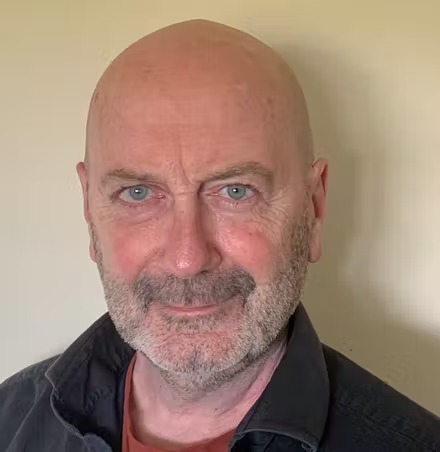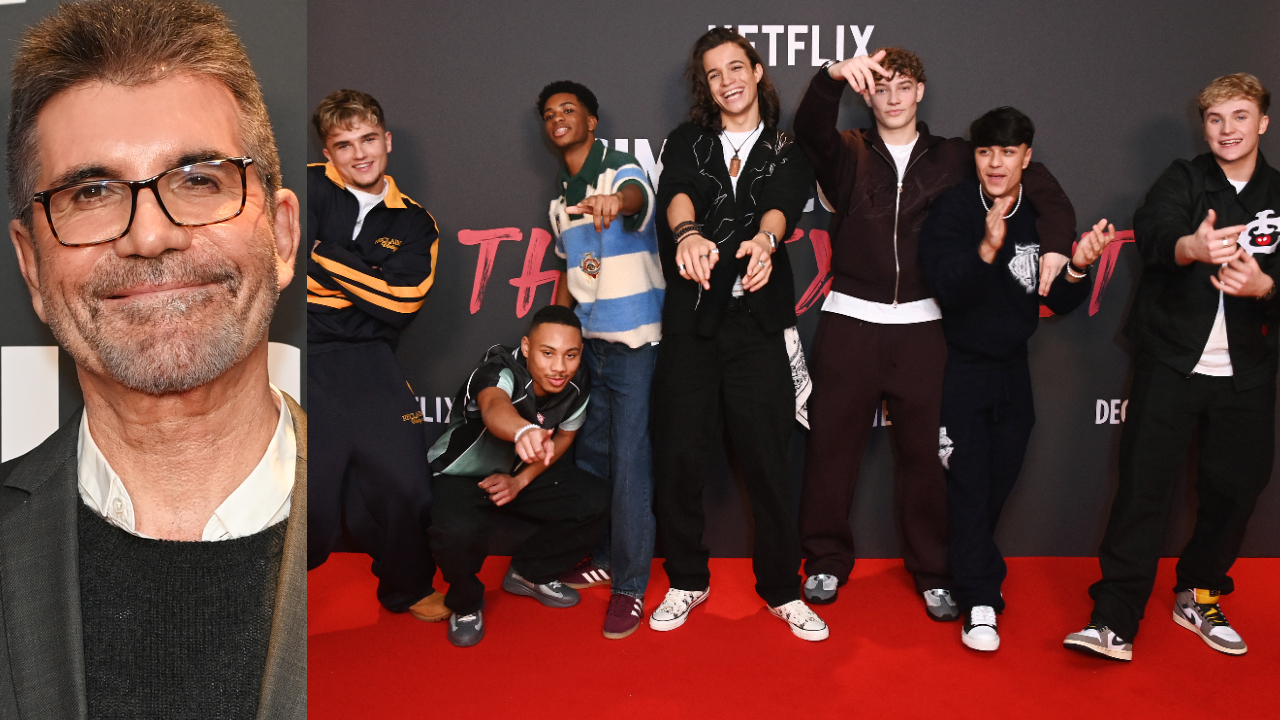“As soon as Jimmy Page came on, the roof came off the place! Afterwards, Plant was absolutely fuming”: The epic, ego-fuelled story of Led Zeppelin and Black Sabbath’s Live Aid reunions
In July 1985, Led Zeppelin and Black Sabbath reunited for Live Aid. Cue the spats and ego clashes
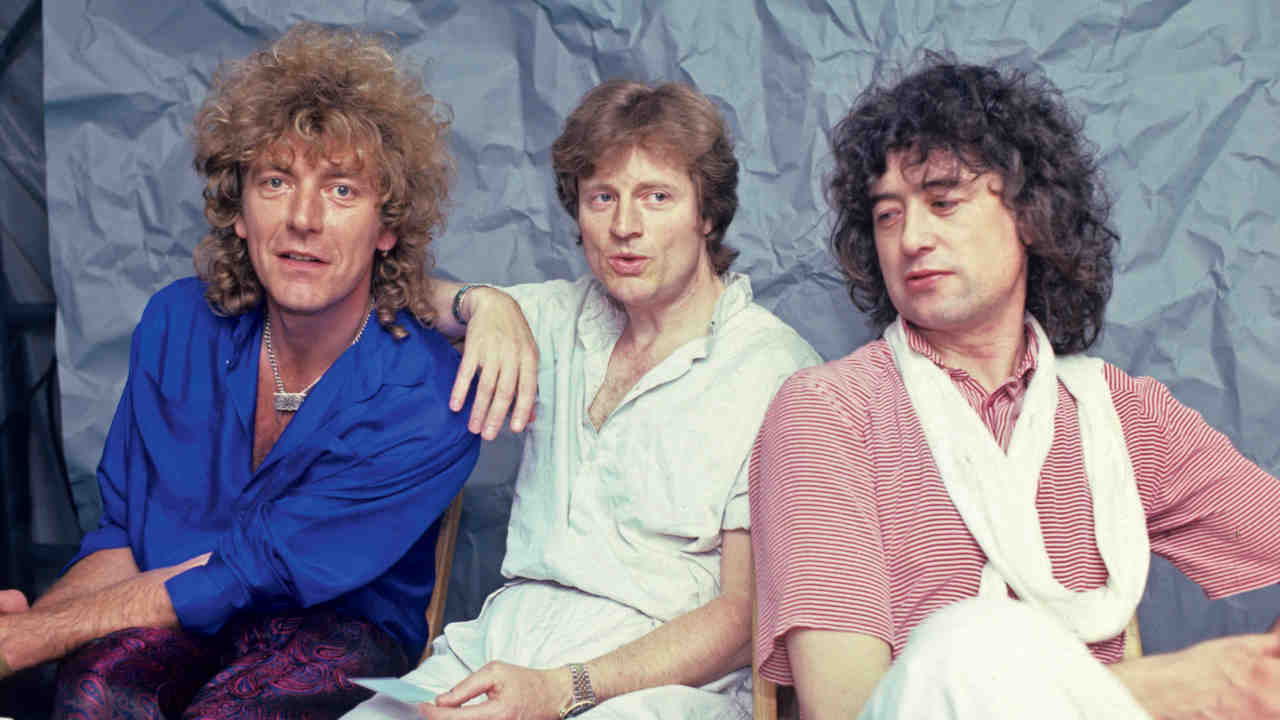
A groggy 9am on Saturday, July 13, 1985. The JFK Stadium in Philadelphia. It’s the morning of Live Aid, the global charity event – arranged hastily by Boomtown Rats singer Bob Geldof after an epiphany watching TV reports of famine in Ethiopia – now regarded as the defining musical moment of the 1980s.
The foundational Live Aid show at Wembley Stadium had begun two hours before – midday UK time – with Status Quo doing their cheeky-chappie version of Rockin’ All Over The World. “I’d done a gram of coke and half a bottle of tequila before we even went on stage,” Francis Rossi later told me.
In Philadelphia the earlier morning start is far more sedate, respectful – and corny. Officially, the JFK holds 102,000 people, and it is already nearly full. Clad in black from sunglasses to shoes, 48-year-old actor Jack Nicholson, the show’s headline host, wanders on stage all Hollywood howdy-doody, just as the TV announcer intones solemnly: “You know, in the next sixty seconds twenty-eight people are going to die of hunger. Twenty-one of them are going to be children…”
Reading from hand-held notes, Nicholson delivers his rehearsed burble: “…a privilege… proud… international family of artists…”, describing the show as “the Live Aid Concert for African Family Relief”.
“I didn’t know it was family relief,” says one backstage onlooker.
“He said ‘famine’,” hisses another.
The multi-Oscar-winning greatest movie star in the world fumbles his lines again as he introduces the opening act, Joan Baez: “A woman who’s always been heard… when a just… when… whose voice has always been heard… when a just cause needed her song…”
Sign up below to get the latest from Classic Rock, plus exclusive special offers, direct to your inbox!
“Definitely ‘family’,” someone says.
Baez is America’s Joan of Arc. As Nicholson just alluded to, she has been lending her three-octave soprano to protest concerts, fundraising rallies and social justice causes since Geldof was being bullied by Catholic nuns at school in Dublin.
“Good morning children of the eighties,” she announces motherly. “This your Woodstock and it’s long overdue!”
Joan’s only allocated song of the day, Amazing Grace, sung a capella with the audience, segues into We Are The World, the superior but still cheesy US version of Do They Know It’s Christmas?, itself an exemplar of prime 80s cheddar.
It shouldn’t work, but it does. Joan absolutely kills it. Live Aid America suddenly takes flight. Turns out this stuff’s good for you! Who knew?
Just remember to chew before swallowing…
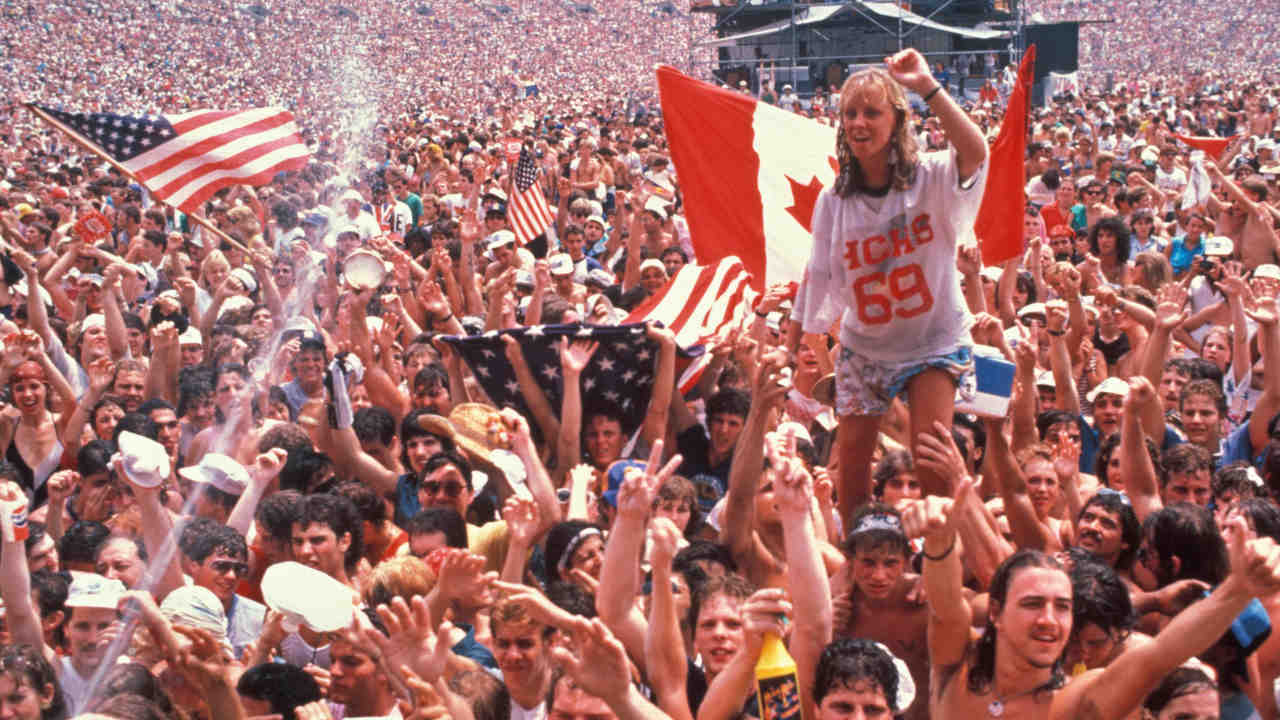
At that very moment, a high-contrast scene is unfolding elsewhere in the stadium as the four original members of Black Sabbath disembark world-wearily from the drab minivan that has ferried them from their hotel suites, in readiness for their 15-minute set, scheduled for a seemingly insane 9.55am.
An eager young reporter from ABC, who are televising the show, spots Ozzy Osbourne and dashes over, thrusting her microphone into his bemused face as the cameraman takes aim.
“Ozzy!” she screams, “What can we expect from Black Sabbath on this historic day?”
Blinking into the 95-degree sun, Ozzy regards her forlornly. “We thought we’d start with Food Glorious Food,” he says, not a flicker of mirth on his sad jester’s face.
“What?” she says, caught off-guard, clearly unacquainted with the 1960 stage musical Oliver! which first showcased the song. Or even the Oscar-winning 1968 film version. For shame, youth of America!
“Yeah,” Ozzy says. Helpfully singing ‘Food glorious food! Hot sausage and mustard!’”
While the young reporter keeps smiling, Ozzy stumbles off towards the dressing rooms.
“Ozzy Osbourne,” she recovers quickly, camera still rolling. “Here like all these great artists today to help feed the poor of Africa…”
“I know it’s for a good cause, but to be honest I don’t really care,” Ozzy told me the night before in the hotel bar, where he was sipping Diet Coke. Ozzy had been on the wagon since checking out of the Betty Ford Clinic six months earlier.
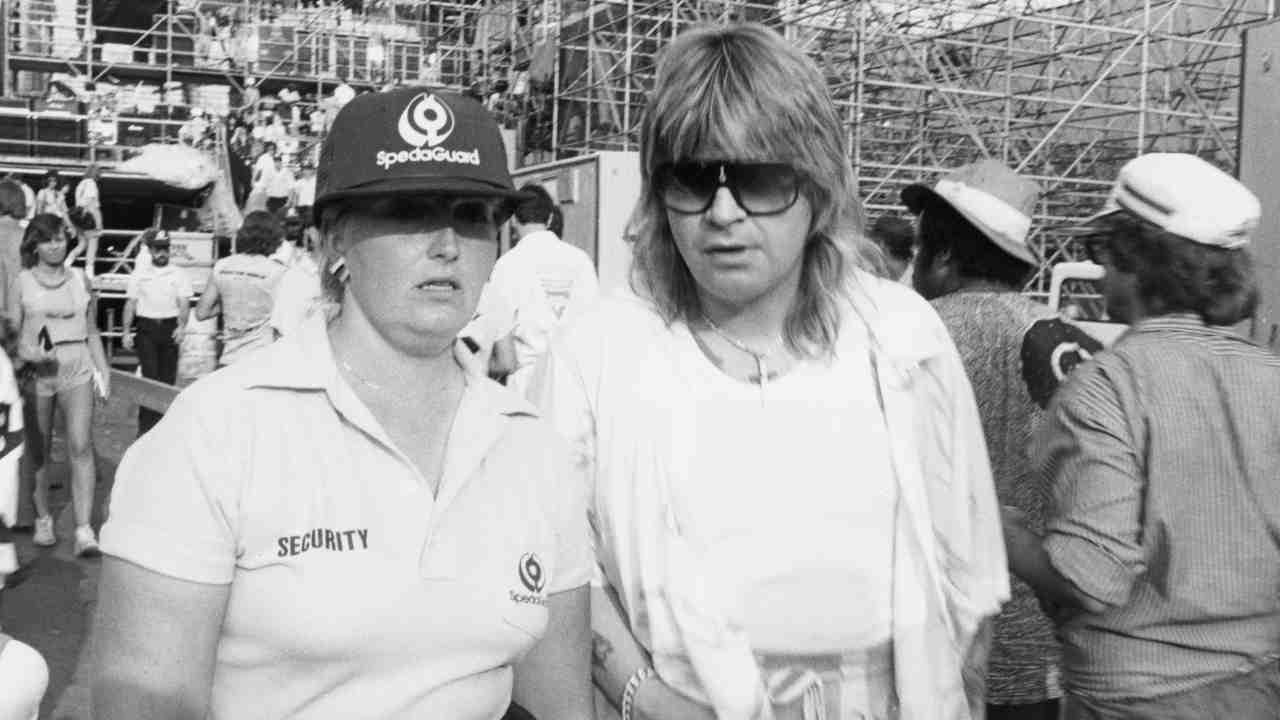
“My father used to say in the war everyone was friendly and helped each other, but as soon as the war ended they were back to being pricks again. There’ll be people at this show who’ll be telling each other to go fuck themselves tomorrow.”
This was hardly a minority view shared among the stars, has-beens and their very many best friends glad-handing backstage at JFK. The overwhelming feeling was one of: ‘Yeah yeah, feed the world, but why has he/she/they, everyone else got better dressing rooms/time slots/stage production/transport/showers?’ The famous ‘LEAVE YOUR EGO AT THE DOOR’ sign that producer Quincy Jones taped to the studio wall during the We Are The World sessions is now long forgotten.
“I ain’t taking shit off today!” Madonna proclaimed loudly during her set, referring to her recent nude photo-spread in Playboy. Classy, like. Following her on stage, Tom Petty gave the middle finger to persons unknown less than a minute into American Girl.
Meanwhile, a bedraggled David Crosby thundered around, railing against the drugs and weapons offenses for which he’d just been sentenced to nine months in jail. Telling me how “fucking disgusted” he was that the first Crosby, Stills & Nash performance for 10 years had been followed by “some heavy metal garbage!” Specifically, Judas Priest.
It was a remark that underlined the sense of barely concealed contempt the rock and pop literati held for heavy metal in the mid-80s. Geldof could get his head round having Queen on the bill at Wembley, even Quo synchronising guitars, but Thin Lizzy, fronted by Geldof’s once-friend and early mentor Phil Lynott, didn’t even get an invite. The only other unequivocally ‘rock’ band on the bill was The Who.
Even in America, where people knew their KK from their Geezer, Geldof winged it. Led Zeppelin? Sure. As long as they do Stairway To Heaven. How about The Cars? REO Speedwagon? Metal fans eat that crap up, right?

The woeful lack of representation for what was then the biggest-selling music in the world did have one positive consequence: Hear ’N Aid. The Ronnie James Dio-led charity album, recorded in London six weeks before Live Aid, featured members of Blue Öyster Cult, Judas Priest, Y&T, Spinal Tap, Mötley Crüe, W.A.S.P., even ferociously anti-lib heavy metal hunter-gatherer Ted Nugent.
The signpost single Stars, written and sung by Dio, was heartfelt and heavy and a stiff riposte to Geldof’s shortsightedness. Released in tandem the following year, the Hear ’N Aid project raised more than $3 million for Geldof’s famine relief fund.
Of the two events, Philadelphia was the only Live Aid show that included any metal artists, and then only three of the 33 on the bill: Sabbath, Priest and Zeppelin. Of those, Priest were the only one officially still alive and in the game at the time.
The mood in the Sabbath camp was none-more-black. It was the first time since 1978 that the four originals had agreed to share a stage, and hopes were for ‘a friendly backstage’, in biz parlance. That is, where all personal enmities be set aside while the band rehearse for a couple of days and do some promo. Strictly no aggro.
Two snags. Firstly, Sabbath were now managed by Don Arden, the mafia-connected showbiz maverick famous for hanging rivals from top-floor windows and always beginning meetings by placing a loaded gun on his desk. “I find it focuses attention,” he explained.
Ozzy, meanwhile, was being managed by Don’s daughter, Sharon, also now Ozzy’s wife, who had learned the ropes – and how to tie people up in them – at papa’s knee. Yet now she was at war with him. Fighting over Ozzy’s contract with Don’s label, Jet. Fighting over things only daddies and daughters fight about.
By 1985, Sabbath’s career in the US was all but over, following the acrimonious departure of former Deep Purple singer Ian Gillan, which had followed the acrimonious departure of former Rainbow singer Ronnie James Dio, which had followed the acrimonious departure of Ozzy. The circle of mistrust complete.
Now Don was angling for a full-on Ozzy-Sabbath reunion. He’d seen the millions Purple had raked in with their re-formation. He knew he could do even better with an Ozzy-led Sabbath.
But that led to the other stumbling block: the fact that Ozzy’s post-Sabbath solo career had taken off like a rocket in the US. Or as Sharon summed-up: “They need us more than we need them,” adding sweetly: “So fuck ’em.” Tellingly, when comedian/actor Chevvy Chase introduced them on stage at the JFK it was as “Black Sabbath featuring Ozzy Osbourne!”
Don wasn’t asking, though, he was telling. Halfway through a live televised interview two days before the show, Ozzy had been served with a writ from Don’s lawyer, forbidding him to perform with Sabbath.
Nobody blinked. It was just nasty old Don being Don. But it was a low blow that rankled.
“That was the last straw for Sharon,” said one insider. “Any tiny chance whatsoever of Ozzy getting back together with Tony was gone after that.”
The fact even a ‘tiny chance’ existed, however, ran counter to everything Ozzy had to say on the subject in Philly. “Do you know how many years it took me to get out of that fucking mess with Sabbath?” He looked at me wearily. “No, bollocks to all that. I’ve got enough to worry about trying to kick this drink thing.”
Nevertheless, Live Aid became the demon seed behind Ozzy’s reintegration into Sabbath amid great fanfare in the 90s. Almost exactly 40 years to the day since they began their Live Aid set with – what else? – Children Of The Grave.
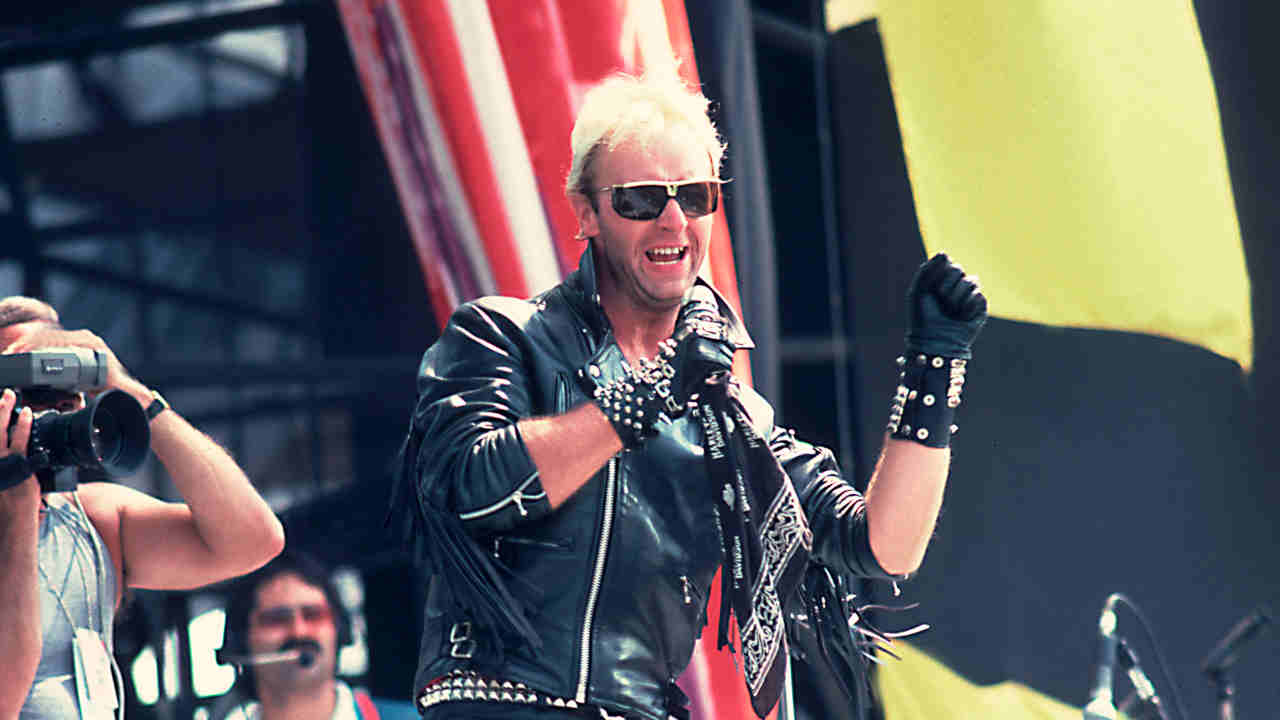
By contrast, Judas Priest, who followed Sabbath on to the JFK stage bright and early that morning, appeared to be peaking. The band were in the middle of recording their Turbo album at Compass Point studios in the Bahamas, and not at all interested in interrupting that in order to, as Rob Halford recalls in his memoir, “go all that way to do three bloody songs”.
Speaking now, Halford recalls the clincher being when Priest’s manager, Bill Curbishley, who also managed The Who, “called to say that the Live Aid people had reached out to him asking about putting The Who on the UK side – and he said: ‘Okay, but I want Judas Priest for the USA’.
“After that everything happened quickly,” says Halford. “We did a couple of run-throughs in the studio then flew into Philadelphia the day before the show and back to work the next day.”
It wasn’t until Priest hit the stage at precisely 11.29am with Living After Midnight that he “realised the enormity of the event”.
Unlike squabbling Sabbath and overcomplicated Zeppelin, Priest actually enjoyed themselves.
“I was there for the whole event,” Halford says now. “For me the three best highlights was watching Sabbath – and later Plant and Page. Then toward the end Tina [Turner] and Mick [Jagger].” He’d also thrilled to Madonna. “Pop tart that I am, I loved seeing Madonna,” he later wrote. “I’ve always been a gay metal fanboy for her.”
He’d also experienced “an out-of-body feel” when Joan Baez asked to meet him. Rob feared what the grand dame of American folk might have to say about Priest’s camp metal version of Baez’s transcendental opus Diamonds And Rust. Instead, “she came tripping towards me, smiling and waving”. Joan wanted Rob to know that Priest’s regal version of Diamonds was her son’s favourite. “He thinks it’s great that his mom’s song was covered by a metal band.”
For Halford, Live Aid was a positive. “Looking back, I feel good that Priest took part in something so important and [that] showed the world how powerful music is when all kinds and styles come together for a great cause.”
Heavy metal had to be seen to be truly believed. Yet it lurked in the margins of A-list music-biz blags like Live Aid.
“There was a live feed on ABC [and] MTV, I believe,” says Halford, “so millions tuned in, meaning a lot of people saw and heard us for the first time.”
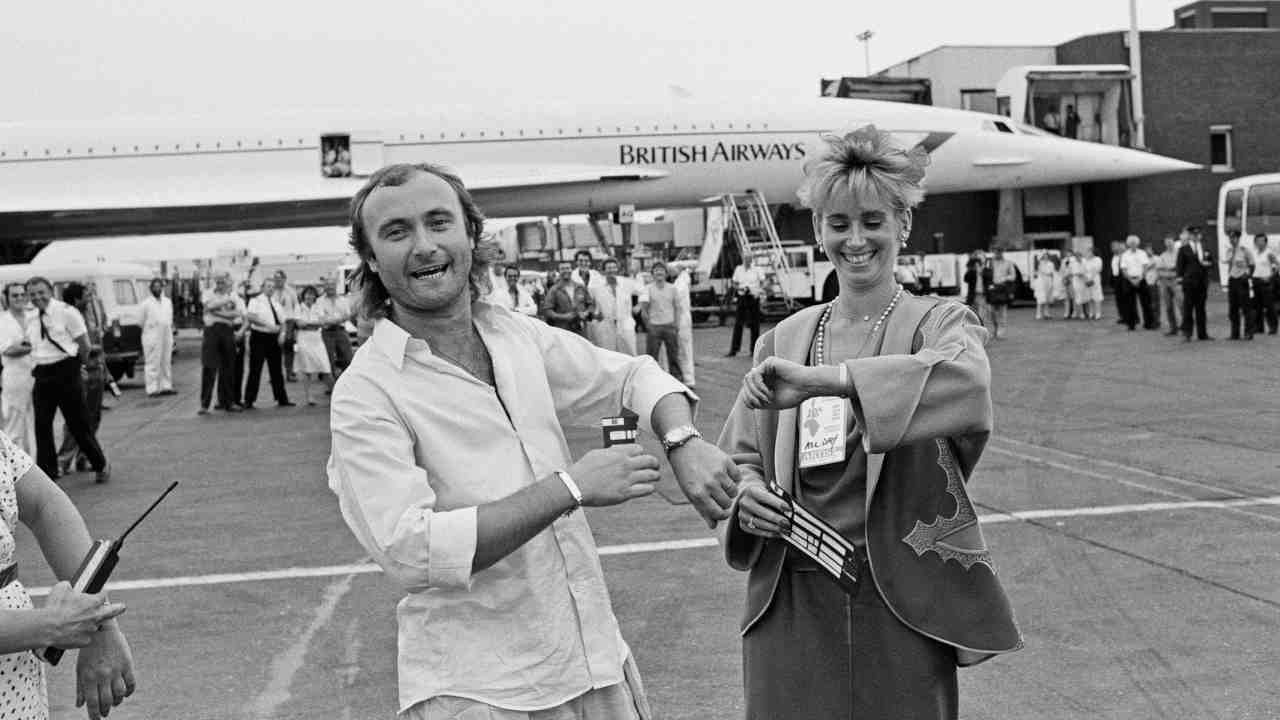
Halford’s mention-in-passing of Page and Plant – specifically not Led Zeppelin – is unintentionally revealing. Long-overlooked is the fact that when they were introduced on stage at the JFK that evening by Phil Collins, it would not be as Led Zeppelin but individually: “Mister Robert Plant, Mister Jimmy Page and Mister John Paul Jones…” In that order.
The backdrop to Zeppelin’s unofficial reunion was besmirched by more ‘personal issues’ even than Sabbath’s.
Plant was 37 and intent on putting as many miles between his solo career and his past in Zeppelin as possible. He’d even cut his hair – a bit. Buttoned up his shirt – a bit. Still wiggled his ass, but don’t you dare mistake him for one of those clichéd oldsters like Whitesnake. Robert was an artist from a far higher musical order, you see. A sort of Peter Gabriel intellectualism seasoned with white Ray Charles classiness and black Robert Johnson filthiness. Not heavy metal.
His first two solo albums had gone gold and platinum in Britain and America and several other key territories. But his third, Shaken N’ Stirred, was a mess; one minute poor man’s Steve Winwood, the next poor man’s Bowie, the next… Released just weeks before Live Aid, it barely scraped the Top 20 in the UK or US.
Fortunately for Plant, he had an ace up his rolled-up Miami Vice sleeve. The unexpectedly huge success of his mini-album The Honeydrippers: Volume One, an almost throwaway idea of Atlantic Records supremo Ahmet Ertegun’s to record some of his personal R&B standards from the 1950s. Ertegun took the idea to Plant after being double-wowed by his backing band, named the Honeydrippers, complimented in the studio by Chic’s Nile Rodgers, David Letterman’s musical director Paul Shaffer, and a couple of old-school session cats named Jeff Beck and Jimmy Page. The public’s indifference to Plant’s vain attempts to become 80s-relevant was matched only by the ecstasy it expressed at Plant wailing on Rockin’ At Midnight, or Jimmy Page rockabilly soloing on I Get A Thrill.

Plant said it was his favourite-ever non-Zep project. It was also his most successful: Top 5 in the US and Australia, No.1 in Canada, plus a top-three US single. When ticket sales for the Shaken ‘N’ Stirred US tour that summer dragged, Plant started doing more Honeydrippers material and suddenly new life was injected into the tour.
By coincidence, Page’s first post-Zep project, teaming up with former Free and Bad Company singer Paul Rodgers in The Firm, had also taken off in the US that year. Their album had gone gold and their tour dates were selling out.
Phil Carson, then managing both Page and Plant, says the initial approach from the Live Aid team had been for The Honeydrippers, and on that basis Plant had readily agreed. “Then as soon as it got out that Robert was doing it everyone kept asking: ‘Is Jimmy doing it too?’”
As Page had played on the Honeydrippers record, Carson suggested he and Robert do Live Aid as The Honeydrippers. But when Carson called Page, “He said he’d only do it as Led Zeppelin. Robert was a bit lairy about it. But because it was for a good cause, he agreed.”
All obstacles seemingly surmounted, the whole thing nearly came crashing down again when one of the American TV bigwigs told Carson: “Well, you know, Led Zeppelin’s over, who cares?”
Wait… did he say ‘famine’ or…?
John Paul Jones was not actually invited to Philadelphia. “I had to barge my way into Live Aid,” he recalled bitterly. Paul Martinez, the bassist from Plant’s band, was already there, meaning Jones had to play keyboards. “Plant went: [adopts Brum accent] ‘Ooh, bloody ’ell!’ But I elbowed my way in.”
Augmented by former Chic drummer Tony Thompson, thrown off course by the bull-in-china-shop arrival of Phil Collins, Led Zeppelin’s performance at the Philadelphia Live Aid was ridiculed ever after as a total shambles, to the point where they refused to let the footage be included on the official Live Aid DVD. From where I was standing, side-stage, Led Zeppelin at Live Aid in Philadelphia remains one of the most singular, otherworldly spectacles I’ve witnessed in more than 40 years in the music business.
Zeppelin in America still exuded some sort of mystical superpower, and you could feel it everywhere that day. Zeppelin were the only act that everyone backstage – from roadies to superstars – stopped what they were doing to stand in awe and pay witness. Rock as godless religion. Only in America, baby-baby-baby.
“My main memories,” Page told me, “were of total panic.”
Plant had even been moved enough to consider the previously thought impossible. “I’d forgotten what it was like… people crying all over the place… something far more powerful than words can convey.”
However, Phil Carson recalls that when Page joined Plant on stage at a show in New Jersey a week after Live Aid, “as soon as Jimmy came on it was like the fucking roof came off the place!” Afterwards, “Plant was absolutely fuming. He says: ‘Is it always like that when Jimmy Page gets on stage?’ I said: ‘No, but it’s always gonna be like that when Jimmy Page gets on stage with you.”
The result was the first of several failed attempts over the coming years to try to put the led back into zeppelin. Rehearsing in Bath with drummer Tony Thompson, “the first day was all right’, reckoned Jones. Then cracks began to appear. Robert moaning about Jimmy – who was off heroin but still drinking heavily – being slow.
Then Thompson was in a car crash, which Plant saw as an omen. Jones recalls he and Plant drunk “and Robert saying nobody wants to hear that old stuff again. I said: ‘But Robert, everybody is waiting for it to happen!’”
Choke on that.
Mick Wall is the UK's best-known rock writer, author and TV and radio programme maker, and is the author of numerous critically-acclaimed books, including definitive, bestselling titles on Led Zeppelin (When Giants Walked the Earth), Metallica (Enter Night), AC/DC (Hell Ain't a Bad Place To Be), Black Sabbath (Symptom of the Universe), Lou Reed, The Doors (Love Becomes a Funeral Pyre), Guns N' Roses and Lemmy. He lives in England.
You must confirm your public display name before commenting
Please logout and then login again, you will then be prompted to enter your display name.

